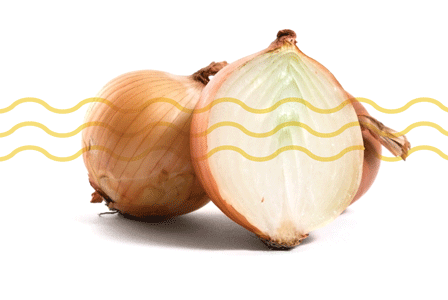
Food irradiation exposes food to radiation from gamma rays, X-rays, or electron beams. Does irradiated foods cause dangers for consumers?
Food irradiation, once a controversy among Canadian health foodies, has fallen off the radar—apparently. Like the genetically modified ingredients that have infiltrated an estimated 70 percent of processed foods, have irradiated foods snuck into our supermarkets?
It is hard to say. Courtesy of a labelling loophole, small amounts of irradiated ingredients such as flour and spices are not easy to track.
Irradiation is a process that exposes food to radiation from gamma rays, X-rays, or an electron beam. The purpose is to kill micro-organisms such as E. coli, salmonella, molds, and parasites. Irradiation also prevents spoilage and increases shelf life.
“Extensive research and testing have demonstrated that irradiated food is safe,” notes the Canadian Food Inspection Agency website. Still, safety concerns surrounding this 50-year-old technology also have a long shelf life.
Health risks
According to the American watchdog Center for Food Safety (CFS), irradiation forms volatile chemicals known or suspected to cause birth defects. It also stunts growth in lab animals fed irradiated foods.
The CFS cites an important 2001 study that linked colon tumour promotion in lab rats to 2-alkylcyclobutanones. This new chemical compound is only found in irradiated foods. Its safety has never been tested by the Food and Drug Administration or Health Canada.
Irradiation has also been shown to cause the low-level production of furans (similar to cancer-causing dioxins) in fruit juice, according to the CFS.
Critics also point out that irradiation diminishes food value, and argue it is a Band-Aid solution for unsanitary farming and processing practices.
Last summer University of Wisconsin research revealed that cats in gestation who were fed irradiated foods for several months suffered nerve damage, resulting in symptoms of paralysis and loss of vision and mobility. After their diets were returned to normal, the damage slowly regenerated. Although the intent was to test nerve recuperation, this study generated fresh attention about irradiation safety.
Last year marked the 50th anniversary of an agreement between the World Health Organization (WHO) and the International Atomic Energy Agency (IAEA). This agreement prevents the WHO from investigating and issuing warnings about the risks of nuclear power—including irradiation—on human health.
A report titled Bad Taste: The Disturbing Truth about the World Health Organization’s Endorsement of Food Irradiation was produced by the groups Public Citizen and Global Resource Action Center for the Environment. It accuses the WHO and IAEA of knowingly downplaying irradiation dangers.
|
Permitted irradiated foods in Canada
|
Irradiated foods in Canada
Some irradiated foods are allowed in Canada (see sidebar). Only these irradiated foods are also allowed to be imported. In 2002 Health Canada proposed extending approval to mangoes, poultry, ground beef, shrimp, and prawns, although to date this approval has not been granted.
Whole foods must be labelled with a statement such as “irradiated,” “treated with radiation,” or “treated by irradiation” along with the international radura symbol.
Prepackaged foods that contain an irradiated ingredient that makes up more than 10 percent of the product must list it as “irradiated” on the label.
Irradiated food that is not packaged must have a sign placed beside the food to indicate that it has been irradiated.
And yet a labelling loophole makes it more difficult to identify lesser amounts of irradiated foods in processed products. If an irradiated ingredient makes up less than 10 percent of the finished product, it is exempt from the labelling requirements.
All supermarket signage and advertisements are required to carry the same identification as shown on the label package.
For the more discerning shopper, some brands specify “non-irradiated.” Look for products that are organically certified, which prohibits irradiation, and when in doubt, ask.

